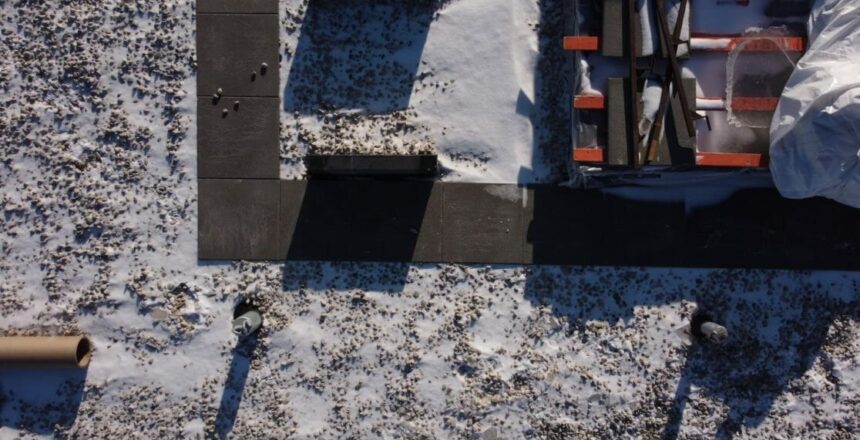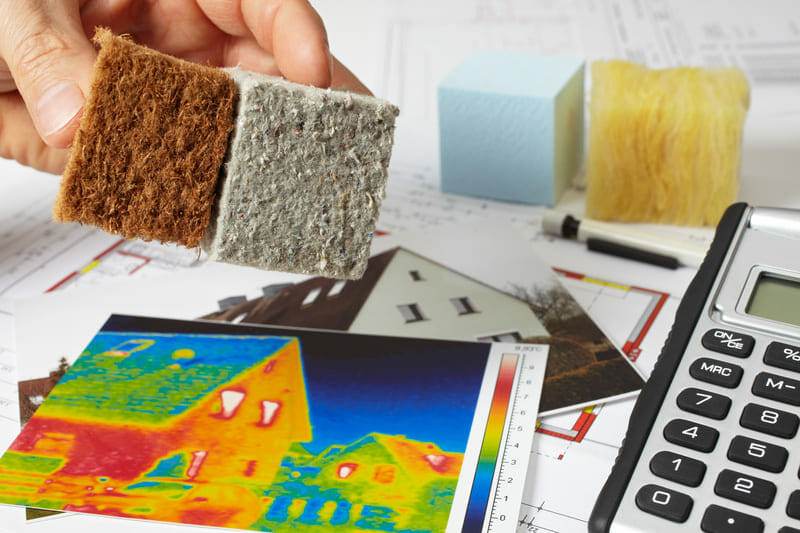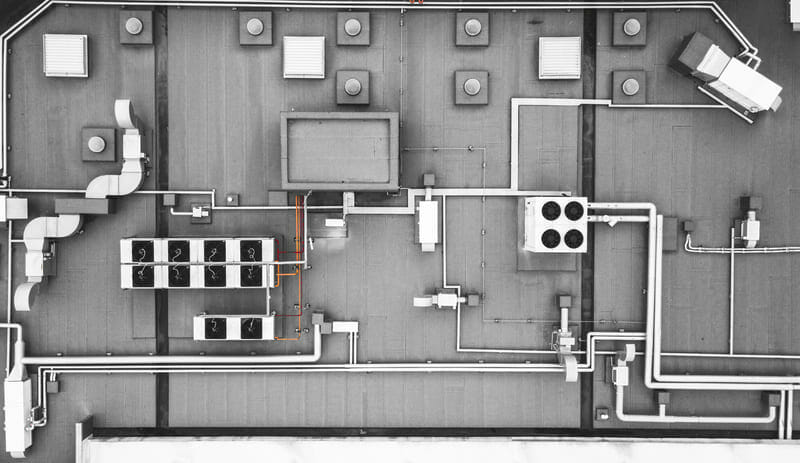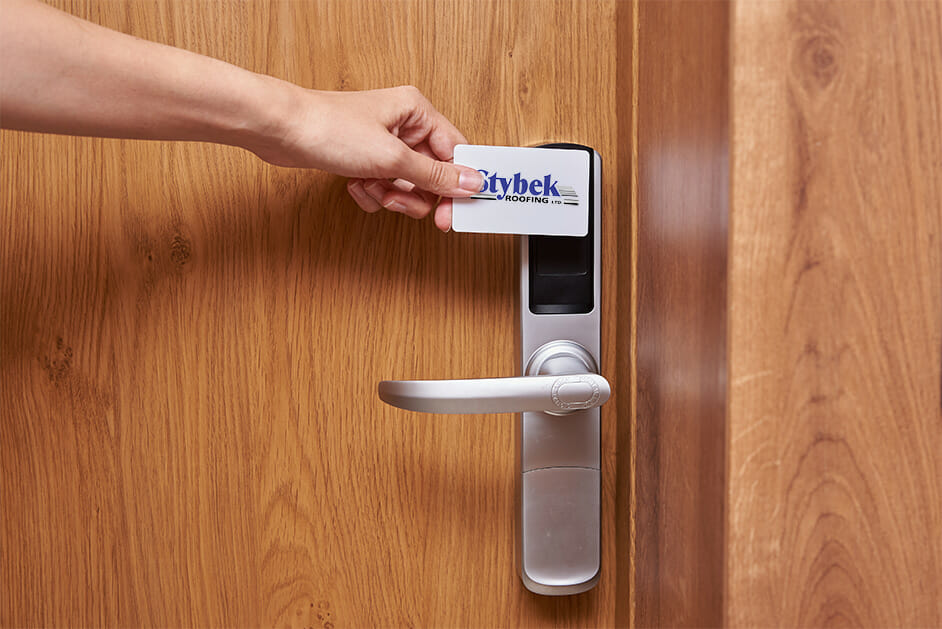Do you know what’s on your commercial roof?
You might be surprised.
Last year, a Detroit homeowner was surprised to learn that there was an 18-foot-long reticulated python on his garage roof. His snake, Juliet, had made a break for it after he failed to lock her cage properly.
Maybe she was looking for her Romeo?
All jokes aside, there are two lessons here:
- Keep your snakes locked up tight unless you want your building to trend on Facebook – and not for the right reasons.
- Always know what’s on your roof!
At Stybek Roofing, we can’t monitor your pets, but we can tell you what shape your commercial roof is in. So how often should you call for an inspection?
Most commercial roofs are tough- but not that tough!
Commercial roofing is built to last, but it still needs regular inspections and maintenance.
At the very least, you’ll want to do a visual inspection a few times a year, especially if it’s been a windy fall or harsh winter. If the building doesn’t have rooftop access, you can use a ladder to give it a once-over or indulge your inner geek by flying a drone over the building to check for branches, debris, or pooled water.
These measures give you an idea of what’s going on at surface level, but not all problems are so easy to spot. That’s when you want to call in the pros.
How often do I need a professional commercial roof inspection?
That depends on your roof. Specifically:
- What your roof system consists of
- How well the roof system is draining
- Weather conditions (and how well the roof stands up to them)
- The age of the roof
The experienced commercial roofing team at Stybek Roofing will review these factors with you and advise how often you should arrange for a professional inspection.
What is my commercial roof made of?
When we’re putting an inspection schedule together, we take your roof components into consideration. Different materials deteriorate at different rates: a standard tar and gravel flat roof is going to need attention more often than one made from standing seam metal.
Below is an overview of common roofing types and their recommended inspection schedules.
| Type | Lifespan | Recommended Inspection Schedule |
|---|---|---|
| Built-up roofing (BUR) membrane | 20 to 25 years | At least twice a year- possibly more often if the weather has been harsh. |
| Metal Roofing | 40 to 60 years | Since metal is prone to rusting, seasonal inspections are recommended. |
| Modified bitumen roofing | Up to 20 years | At least once a year. |
| Thermoset (EPDM) roof membrane | Up to 30 years | At least once a year. |
| Thermoplastic (PVC & TPO) roof membrane | 20 to 30 years | At least once a year. |
| Green roofing | Indefinitely | Three or four times a year. |
Built-up roofing (BUR) membrane
Built-up roofing, otherwise known as BUR, is basically your typical tar and gravel roof. In most cases, you’re looking at a 20-25 year life expectancy. Although durable, they need to be maintained and repaired more frequently than most roof types, so arrange for an inspection at least twice a year- possibly more often if the weather’s been bad enough to make headlines.
Metal roofing
Metal roofing is fast becoming the roof of choice for new buildings. They have a sleek and finished look and excellent fire resistance ratings. They also last a long time- standing seam metal maintains its integrity for over 50 years while zinc and copper roofs can last over 100 years.
With a metal roof, your main concern is rusting. We recommend seasonal inspections to confirm that there are no signs of oxidation and or any issues like open seams, open penetration flashings, or fastener blackout.
Modified Bitumen Roofing
Asphalt-based modified bitumen roofing is similar to BUR. They offer layered protection that can stand up to the worst weather conditions and are highly resistant to puncturing or tearing. One of their biggest benefits is that they can expand and contract according to temperature without coming loose or losing their shape.
The life expectancy of a modified bitumen roof will depend on your building’s location and architectural design as well as maintenance frequency, but most manufacturers suggest that it can last up to 20 years.
Arrange for a professional inspection at least once a year and carry out routine maintenance according to the recommended schedule.
Thermoset (EPDM) Roof Membrane
Also known as EPDM roofing, the thermoset roofing system is constructed from single-ply rubber and resists both ozone and ultraviolet light. Other benefits include reflective properties that lower cooling costs, better flexibility in colder temperatures, and resistance to certain acids, solvents, and alcohol.
When properly maintained, EPDM commercial roofing can last up to 30 years. A yearly inspection is recommended to confirm that the components remain in good condition from one season to the next.
Thermoplastic (PVC & TPO) Roof Membrane
Thermoplastic roofing systems (polyolefin and poly vinyl chloride) are reflective, lightweight, and resist puncturing, tearing, and corrosion. These qualities make them especially popular with restaurants and other businesses that regularly release fats and/or oils from their ventilation systems. (It is important to note that proper protection of any roof system from foreign substances is strongly recommended.)
With proper care, thermoplastic roofing systems can last for 20 to 30 years, so schedule a yearly inspection to confirm that all components are in good working order and nothing requires repair or replacement.
Green Roofing
Green roofing is growing in popularity thanks to their beauty and sustainability. These systems consist of a durable membrane, drainage layers, growing medium, and different types of trees and plants. Once installed, they improve air quality, retain stormwater, and minimize the urban heat island effect.
While maintenance is usually minimal when a green roof is properly installed, you should hire an experienced contractor to inspect and maintain the system three or four times a year.
How do weather conditions affect commercial roofing?
Heavy snow is fun for kids but can spell disaster for your commercial roof. Heavy winds will also leave it piled with dirt, leaves, and tree branches. In both cases, you’ll want to clear the surface to remove pressure from the structure and prevent damage.
Even if weather conditions have been super-mild (think Green Christmas), you should still maintain a regular inspection schedule. No matter how light, rain and snow can degrade the condition of your roof over time.
Below is an overview of common issues you want to watch for as the temperatures change.
Winter
Winter is tough on commercial roofing. As ice accumulates, it applies excess weight and can even block water flow to the drains. If the temperatures fluctuate too frequently, thermal shock can cause the roofing material to quickly deteriorate, so call for an inspection as soon as the snow starts to melt.
Spring
Spring is when the heavy rains hit, so if winter temperatures created cracks in your roof, you’ll soon know it. A clear spring day is an ideal time to have us inspect the roof and recommend repairs that get it ready for the summer heat.
Summer
Too much hot sun is bad for your skin- and your roof. When temperatures are at their height, they can crack the sealants and, if you live in an area where humidity tends to be high, the roofing material could swell and come loose. We can visit your building at the beginning of the season and make sure it’s up for the challenges of an Ontario summer.
Fall
When you think of fall, two things come to mind:
- Falling leaves
- High winds that scatter them everywhere
This debris can block your drains, causing water to flow onto the roof, form pools, and possibly cause leaks. If the winds are really high, you can get tree branches landing on the roof and puncturing the membrane. An experienced roof technician from Stybek Roofing will check for damage and recommend any necessary repairs.
How old is my commercial roof?
Depending on what it’s made from, any roof over 10 years old should undergo seasonal inspections. If you have a newer roof, we recommend the following schedule:
- Modified bitumen, asphalt, and composite roofs: every one to three years
- Metal and ceramic tile roofs: every three to five years
Bear in mind that these are general guidelines. After visiting your business, we will put together a suitable inspection schedule based on the age and condition of your roof as well as its materials.
What roof components should be inspected?
When we’re inspecting a roof, we check for the following problems and, if necessary, recommend a commercial roof repair:
- Surface damage: This includes holes or punctures in the membrane, open seams and surface deterioration , and loose or broken flashings and vents/stacks.
- Leaking: Leaks are a common problem, especially for flat roofs that accumulate standing water. As it builds up, rainwater can also apply pressure to the roof material and rust metal components.
- Blockages: Rooftop debris like falling leaves can clog drains and ventilation systems and cause significant damage to HVAC units. Excessive ponding on the rooftop is a common sign that your drains aren’t working properly.
- Damaged sealant: Properly-constructed flat roofs have waterproof sealing to protect the building from moisture and wind infiltration. We will check for any dried or cracking sealant around the seams and other roof components.
- Weakened joints: If the joints are damaged, water can get into the building around your stacks, vents, and pipes.
- Organic matter: If fungi and mold are present on a commercial flat roof, it can cause serious health problems for employees and customers, especially if moisture has already gotten into the building. The presence of organic matter requires further investigation, as steel and wood can deteriorate under moist conditions.
How do I know when it’s time to replace your commercial roof?
You will eventually want to replace your roof instead of investing in more maintenance and repair services. Below are some common signs that the time has come for a commercial roof replacement call.
Your utility bills are going up
If your electric bills are going up but you haven’t been using your HVAC system more than usual, you probably have an insulation issue. Your roof plays a major role in keeping your building insulated, and if it’s too deteriorated to do its job, it’s time for a replacement.
Visible roof deck wear and tear
The roof deck is the material beneath the waterproofing and insulation layers and the structural components. The main source of roof deck damage is ongoing and untreated moisture issues. What makes it difficult to address is that the signs are not always immediately visible and, by the time they are, the damage is extensive. If you see any signs of wear and tear that suggest moisture ingress, you may have to replace both the roof deck and the roof membrane.
Visible roof membrane damage
If you can see large bald spots on its surface or an uplifting of 25% or more, the membrane and possibly the roof itself may have to be replaced, because incoming rainwater or melted snow will eventually do major damage to the roofing materials and the existing insulation.
Signs of water infiltration
Are there visible water marks or stains on the building’s walls or on the underside of the deck? In most cases, this is due to the roof membrane and other protection systems failing to keep water from getting inside. Not only are these marks insightly for your staff and customers to look at, but they are also a dangerous sign that your roof is deteriorating and should be replaced.
At Stybek Roofing, we offer commercial roof replacement services. Ask us for a quote.
How much does a commercial roof inspection cost?
The price of a roofing inspection depends on the size and style of the roof as well as the location of your business. We would be happy to provide you with a detailed quote.
Arrange for a commercial roof inspection today
Your commercial roof will benefit from regular attention. In fact, some manufacturers require ongoing inspections and membrane cleaning to maintain the roof system’s warranty. Even if yours doesn’t, regular roof inspections go a long way towards maintaining the quality of your commercial building.
Put it this way- if you want your vehicle to last 100,000 miles, you should change the oil and take care of it. Why would your roof system be any different? A comparatively low inspection fee can save you thousands in the long run.
When business owners in and around South-Western, Ontario, need a professional roofing inspection, they call on the experts at Stybek Roofing. Since 1991, we have been providing superior-quality roofing installation, maintenance, and repair services for commercial properties. To schedule an inspection by one of our trained, licensed, and ensured technicians, call 519-888-9676 or contact us online. We offer competitive pricing, honest recommendations, and a satisfaction guarantee.





